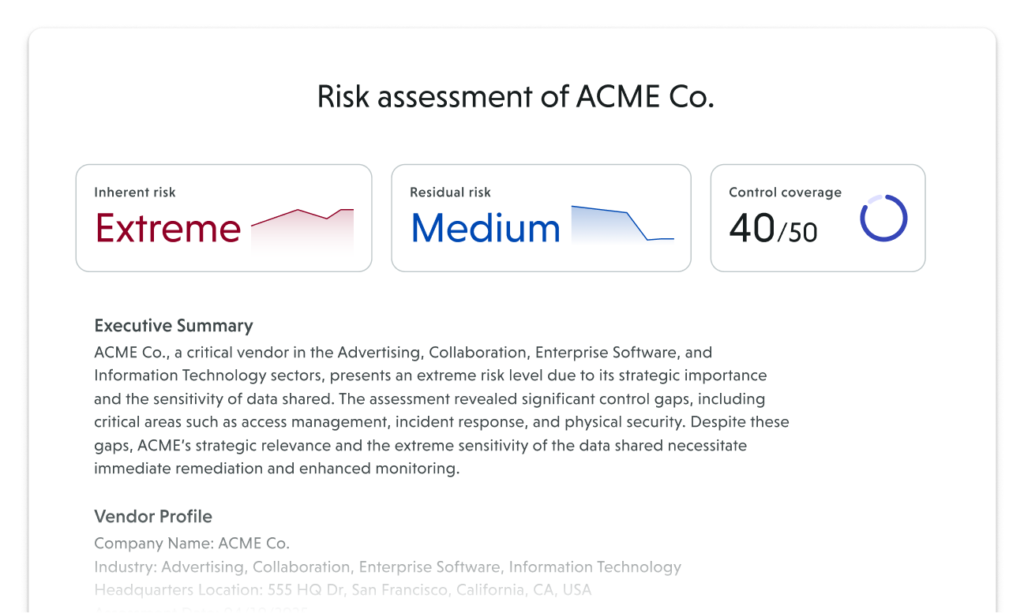Third-party risk monitoring
Risk doesn’t wait for your next assessment. Vendors, suppliers, and partners can experience breaches, lose certifications, or change policies at any time—and relying on a single point-in-time review means you might not catch it until it’s too late.
The problem is that traditional third-party risk assessments stop at a snapshot in time. They leave long gaps where changes go unnoticed, exposing your business to hidden vulnerabilities and supply chain disruptions.
The answer is ongoing risk monitoring—a continuous process that keeps watch over your third-party ecosystem. By tracking cyber incidents, compliance shifts, and operational changes as they happen, organizations gain real-time awareness of evolving risks. The result is fewer surprises, faster response, and stronger resilience across the supply chain.
What is third-party risk monitoring?
Third-party risk monitoring is about keeping a live pulse on your vendor ecosystem. It means continuously tracking changes in security posture, compliance status, and operational resilience—so you’re never in the dark about what’s happening with the partners your business depends on.
Risk monitoring software pulls in signals like breach reports, certification updates, policy changes, and other trust artifacts as they happen. The best programs don’t just alert you—they tie each signal back to the specific vendor relationship, highlight what’s at stake, and point to the right next step. That way, security and risk teams can focus on action, not guesswork, and keep the business moving with confidence.
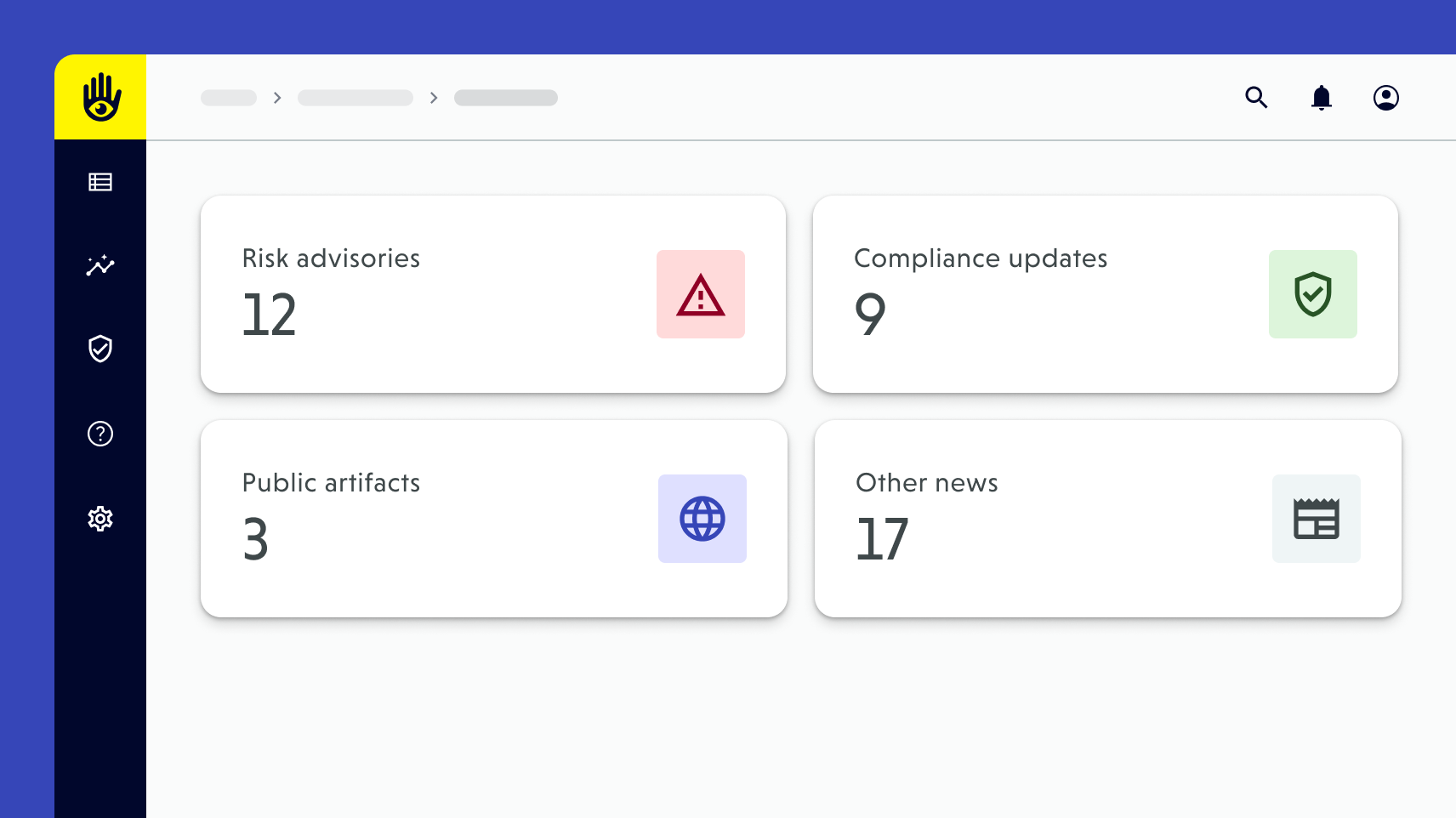
Why continuous monitoring matters
Point-in-time blind spots
Between scheduled third-party risk assessments, critical changes—like breaches, certificate expirations, or policy updates—slip by unnoticed.
Manual effort and delays
Risk teams lose valuable time chasing vendor evidence and updating spreadsheets instead of actually managing risk.
Fragmented intelligence
Signals from domains, trust centers, and news feeds are scattered and hard to piece together into a clear picture.
Slower incident response
When alerts arrive late or without context, teams can’t act quickly—prolonging exposure and compounding risk.
Audit and oversight pressure
Without a consistent, traceable vendor monitoring process, it’s difficult to prove ongoing due diligence to regulators, boards, or customers.
Types of vendor risks to monitor
Not all third-party risks are alike. Effective monitoring means keeping watch across multiple categories, each with its own impact on your business.
Cyber risk monitoring
Breaches, exposed credentials, and vulnerabilities can surface at any time. Cyber risk monitoring tools track threat intelligence, vendor domains, and open sources to detect compromises early—before they turn into costly incidents.

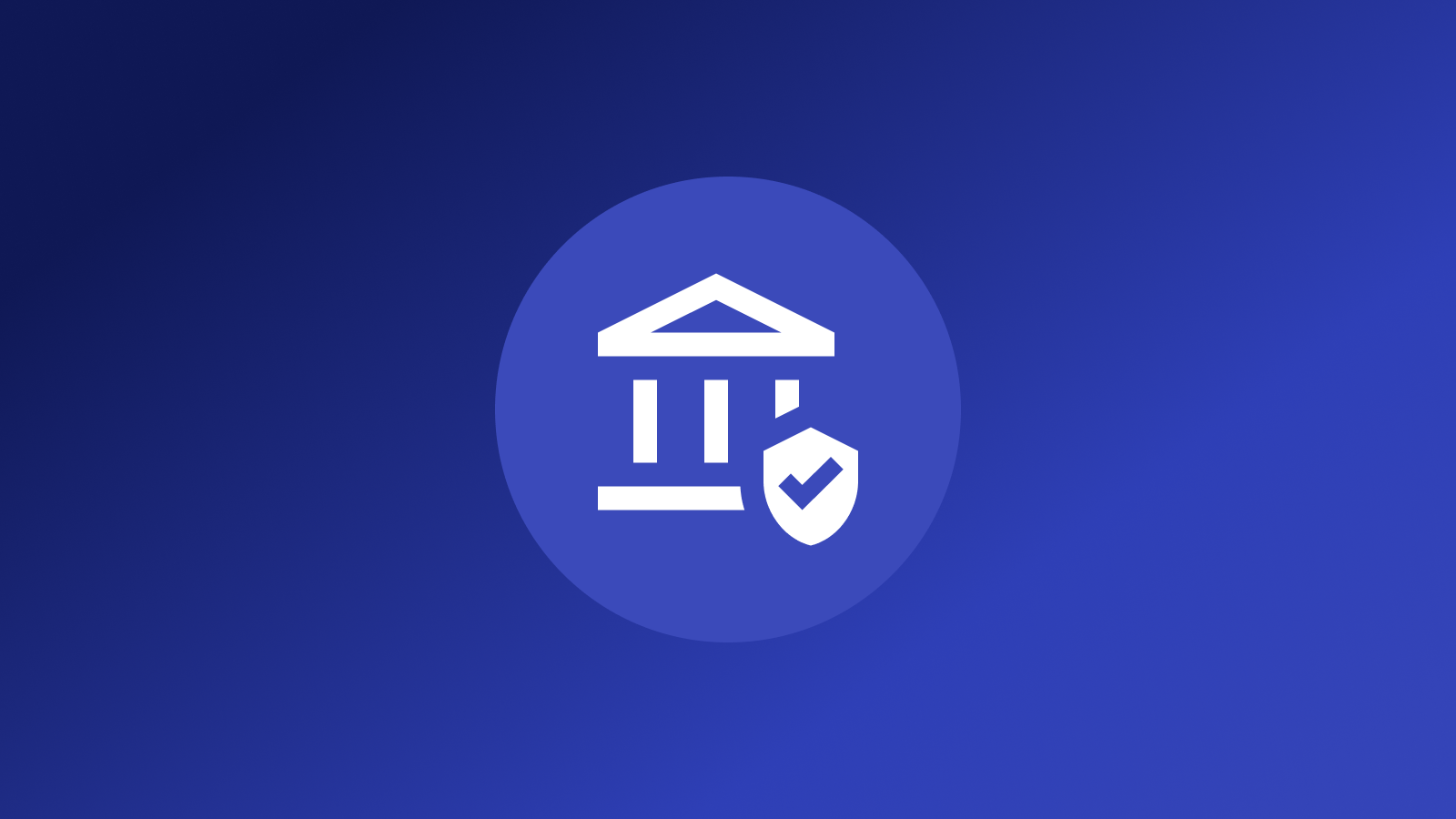
Compliance monitoring
Vendors are expected to maintain certifications and regulatory attestations such as SOC 2, ISO 27001, HIPAA, and GDPR. Compliance monitoring helps spot expired certifications, changes in trust center URLs, or new obligations that could put your program out of alignment.
Operational and supply chain risk monitoring
Vendor stability is just as critical as security. Supply chain risk monitoring tracks disruptions like outages, ownership changes, financial distress, or dependencies on risky sub-services. These signals are key to resilience and business continuity.

Breaking risk into these categories helps organizations move beyond static questionnaires toward a living, dynamic view of vendor posture. With AI-powered assessments, these risks aren’t just identified—they’re continuously monitored, contextualized, and prioritized so teams can act before small issues become major problems.
Business outcomes of AI-Powered risk assessments
The value of ongoing vendor risk monitoring goes far beyond compliance checkboxes. Organizations that adopt continuous oversight achieve:
Reduced breach exposure
by detecting incidents early and remediating faster.
Accelerated procurement
with always-current vendor profiles that speed up onboarding.
Improved vendor trust
by showing partners and customers that oversight is proactive and consistent.
Stronger resilience
across the supply chain, with fewer surprises and better continuity planning.
Scalable resilience
that lets teams evaluate and monitor thousands of vendors—consistently and continuously—without increasing headcount.
These outcomes shift third-party risk management from a defensive task to a driver of business agility and trust.
Best practices for AI-Powered risk assessments
Building an effective monitoring program takes more than just tools. Leading organizations follow a few key best practices:
Set clear objectives
Define what you need to monitor (e.g., cyber events, compliance artifacts, operational disruptions) and why it matters to the business.
Track meaningful metrics
Measure effectiveness with KPIs like mean time to detect/respond, the percentage of vendors with current certifications, and the volume of high-severity alerts addressed.
Avoid common pitfalls
Watch out for alert fatigue, siloed tools, and fragmented intelligence. Choose platforms that consolidate signals and connect them directly to vendor relationships.
Integrate monitoring into workflows
Feed monitoring outputs into existing tools like Jira, Coupa, ServiceNow, Archer so risk response becomes part of daily operations.
By following these practices, security and risk teams can build a continuous monitoring program that is sustainable, actionable, and aligned to both compliance requirements and business priorities.
How VISO TRUST solves third‑party risk monitoring
A live feed of risk signals, purpose‑built for TPRM. VISO TRUST provides an always‑on risk monitoring solution that connects live intelligence to every vendor relationship — no waiting for reassessments.
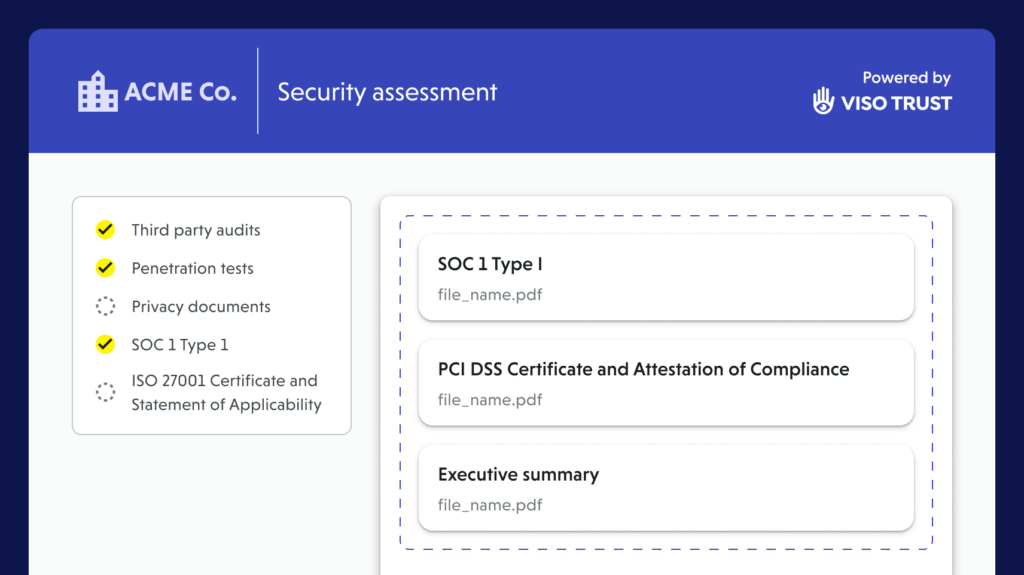
24/7 risk radar
Continuously scans open sources, trust centers, and vendor domains for new artifacts, attestations, and firmographic data.
Instant, evidence-backed alerts
When something changes, it’s synced immediately to the right vendor profile—complete with source links and artifact summaries.
Zero wait time
Risk advisories, compliance badges, and public artifacts appear in real time, so teams can act without delay.
Smart prioritization
Focus only on what matters with customizable notification preferences and clear impact context.
Built-in next steps
From the Monitoring tab, launch a reassessment, flag an internal review, or escalate directly—turning insight into action.
Integration-ready
Streamline and automate complex workflows and decision-making across your entire enterprise stack – seamlessly integrating with tools like Jira, Coupa, ServiceNow, Archer, Slack, Okta, and thousands more.
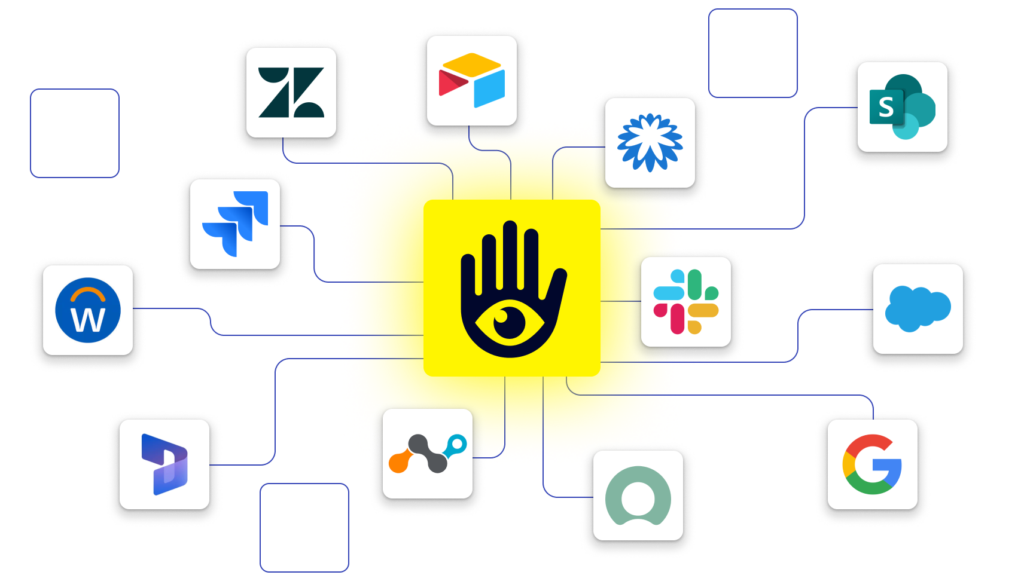
Benefits of AI-powered vendor risk assessments with VISO TRUST
Real-time, not point-in-time
Stay ahead of risk with continuous monitoring across your entire vendor ecosystem—no more stale snapshots.
Faster detection and response
Catch breaches, certificate expirations, and policy changes as they happen, with contextual alerts and clear next steps.
Less manual chasing
Monitoring automatically surfaces certifications, attestations, and public artifacts—freeing your team from endless follow-ups.
Decision at the speed of change
Launch targeted third-party risk assessments the moment a new issue is discovered.
Audit-ready evidence trail
Maintain a defensible record of alerts, actions, and outcomes—ready for regulators, boards, and customers.



